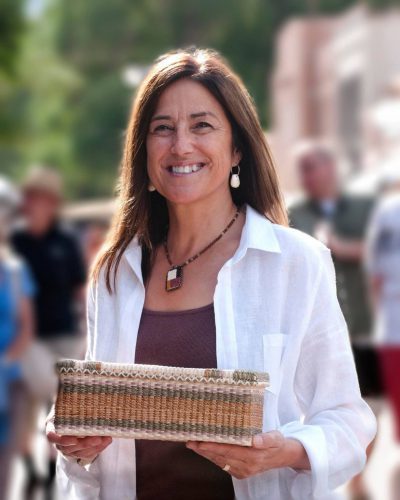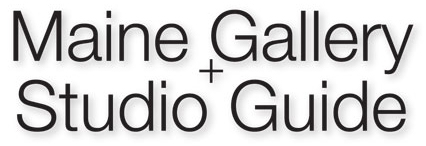
I weave ash and sweetgrass baskets in the traditional Penobscot tribal style. I admire the resilience of my ancestor basket makers, especially my great-grandmother, who actively practiced economic self-sufficiency as an Indigenous woman entrepreneur.
I was always very interested in basketry and my native culture, especially when I visited the Indian Island home of my grandparents while growing up in southern Maine. In the history books of my 1960s-1970s school days, I was dismayed to rarely find mention of my tribe and the remarkable basketry that I would see my relatives producing and selling on Indian Island. It was confusing and non-quantifiable.
After earning an MS in geology, I became the staff geologist for my tribe, the Penobscot Nation, soon after the 1980 Maine Indian Land Claims Settlement when the tribe regained a significant land base. There on Indian Island, I worked with the great, late basket maker and Penobscot speaker Madeline Tomer Shay for five years. I came into my own as an artist in 1988.
Ours is a community art form, in that the mentoring and the economy surrounding the traditional materials access takes place within the Wabanaki community. In my advocacy work at the head of the Maine Indian Basketmakers Alliance (1993-2014), I helped organize mentor basketmakers who then helped bring forward a new generation of basketmakers in the Passamaquoddy, Penobscot, Maliseet and Micmac Tribes.
A great moment for our art form happened last year, when the Wiwenikan, the beauty we carry, exhibition opened at Colby Art Museum where I serve on the Museum’s Board of Governors. This was the first standalone Wabanaki art exhibition in an art museum ever. Previously, exhibitions with baskets had been installed in ethnographic museums and/or a few artists were included in art museum exhibitions.
I have been recognized a number of times for my advocacy and for my own art with awards. The MCA honoring with the Maine Craft Artist award, the Maine Arts Fellowship and the Community Spirit Award (from First Peoples Fund) were especially meaningful, having been bestowed by my peers and my community.
Interestingly, for my entire career as an advocate and leader at MIBA, we worked hard to shift the terminology from the word “craft” to the word “art,” because previously, both basketry and native art suffered from stigmas and stereotypes long associated with the term “craft.”
My basketry and my advocacy work in craft totally changed my career trajectory. I left my full-time job as a geologist in 1998 to work as an artist and become the full-time director of the Maine Indian Basketmakers Alliance.
Recently I’ve been teaching my son Caleb Hoffman (age 28) to weave again. We were mentioned in the arts and leisure section of the New York Times this summer, in a piece related to native artists in pandemic time. At age 62, the pandemic has caused me to rethink my priorities. Both he and I are working to ensure he becomes proficient in all aspects of the craft. I have a number of antique wooden forms and tools that he will inherit to carry on the family art form.
I’m taking Passamaquoddy language classes again (Zoom lessons twice weekly) and looking forward to an upcoming special segment on basketry terminology. Many of the basket makers who helped found the Maine Indian Basketmakers Alliance spoke their language and used it in basketry workshops, public events, and so on. We also hosted special classes with basketry and language. I am weaving new art pieces for upcoming online native art markets/juried craft shows This spring I was weaving “light” in the time of pandemic, making woven night lights for friends. The 99th Santa Fe Indian market is being held online, and I am presenting my work digitally throughout August, and in association, I’m also building a new e-commerce website.
The resilience of my ancestors to withstand pandemics and all kinds of adversity as they wove baskets and kept our culture alive inspires me. I’m also proud to be a member of a strong craft community in Maine.
What Maine Craft Means to Me Essay Series invites you to explore the many intersections and layers of craft, people and time in Maine through the words of those with deep connections to our state and our field. Each week, a new essay will be shared. This is the first essay in the series, authored by basketmaker Theresa Secord.
Categories: Uncategorized

